Showing Spotlights 1745 - 1752 of 2784 in category All (newest first):
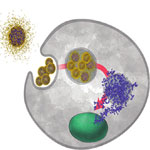 Scientists have shown that two pH response moieties - a pH solubility switch and a pH labile group - can be incorporated into the backbone of polymers which can then be formulated into dual responsive nanoparticles encapsulating small hydrophobic molecules and larger protein payloads. As nanoparticles they function akin to an AND logic gate. The beta-aminoester backbone moiety provides a pH triggered solubility switch, only when this switch is 'ON' does the ketal moiety also turn 'ON' to undergo rapid acid catalyzed hydrolysis. This system seems to be a promising vehicle for the administration of hydrophilic and hydrophobic payloads into target areas of the human body.
Scientists have shown that two pH response moieties - a pH solubility switch and a pH labile group - can be incorporated into the backbone of polymers which can then be formulated into dual responsive nanoparticles encapsulating small hydrophobic molecules and larger protein payloads. As nanoparticles they function akin to an AND logic gate. The beta-aminoester backbone moiety provides a pH triggered solubility switch, only when this switch is 'ON' does the ketal moiety also turn 'ON' to undergo rapid acid catalyzed hydrolysis. This system seems to be a promising vehicle for the administration of hydrophilic and hydrophobic payloads into target areas of the human body.
Nov 24th, 2010
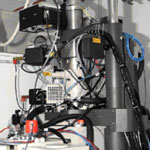 The workhorse of current nanofabrication processes, electron beam lithography (EBL), has good resolution but has good resolution, it is difficult to precisely control the pattern size at the sub-20 nm scale due to the proximity effect and the large beam spot. A more recent nanolithographic strategy, the molecular ruler (MR) method, shows great promise it can precisely control the size of the gap at the nanoscale. Although EBL and MR have been combined before in attempting high-resolution nanofabrication in the sub-20nm regime, the results were always less than optimal because the electron beam irradiation damage to the MR influenced the formation of nanogaps. Researchers in Japan have now developed a post-EBL process, which does not damage MR molecular layers, and fabricated nanogap structures at the expected positions with high product yield.
The workhorse of current nanofabrication processes, electron beam lithography (EBL), has good resolution but has good resolution, it is difficult to precisely control the pattern size at the sub-20 nm scale due to the proximity effect and the large beam spot. A more recent nanolithographic strategy, the molecular ruler (MR) method, shows great promise it can precisely control the size of the gap at the nanoscale. Although EBL and MR have been combined before in attempting high-resolution nanofabrication in the sub-20nm regime, the results were always less than optimal because the electron beam irradiation damage to the MR influenced the formation of nanogaps. Researchers in Japan have now developed a post-EBL process, which does not damage MR molecular layers, and fabricated nanogap structures at the expected positions with high product yield.
Nov 22nd, 2010
 Friends of the Earth have just published a new report titled 'Nanotechnology, climate and energy: over-heated promises and hot air?' As usual, the 'good cop, bad cop' team that writes this kind of document was at its best again. On one hand, there is a lot of really good information in this report, well researched and referenced, and it provides a very useful overview of what's going on in nanotechnology research and development in the climate/renewables fields - albeit with a very negative spin on it. On the other hand, there seems to be a monkey sitting on each FoE editor's shoulder that constantly whispers 'Are you kidding me? Boooring! Too positive! Too balanced! Not scary enough! Traitor - think of all the drowning polar bears!' We look at some of the misconceptions in FoE's report.
Friends of the Earth have just published a new report titled 'Nanotechnology, climate and energy: over-heated promises and hot air?' As usual, the 'good cop, bad cop' team that writes this kind of document was at its best again. On one hand, there is a lot of really good information in this report, well researched and referenced, and it provides a very useful overview of what's going on in nanotechnology research and development in the climate/renewables fields - albeit with a very negative spin on it. On the other hand, there seems to be a monkey sitting on each FoE editor's shoulder that constantly whispers 'Are you kidding me? Boooring! Too positive! Too balanced! Not scary enough! Traitor - think of all the drowning polar bears!' We look at some of the misconceptions in FoE's report.
Nov 18th, 2010
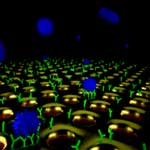 A multi-disciplinary research team has introduced a novel label-free optofluidic-nanoplasmonic biosensor and demonstrated direct detection of live viruses from biological media at medically relevant concentrations with little to no sample preparation. This novel platform can be easily adapted for point-of-care diagnostics to detect a broad range of viral pathogens in resource-limited clinical settings at the far corners of the world, in defense and homeland security applications as well as in civilian settings such as airports or other public spaces. This work is the first demonstration of detection of intact viruses using extraordinary light transmission phenomena in plasmonic nanohole arrays.
A multi-disciplinary research team has introduced a novel label-free optofluidic-nanoplasmonic biosensor and demonstrated direct detection of live viruses from biological media at medically relevant concentrations with little to no sample preparation. This novel platform can be easily adapted for point-of-care diagnostics to detect a broad range of viral pathogens in resource-limited clinical settings at the far corners of the world, in defense and homeland security applications as well as in civilian settings such as airports or other public spaces. This work is the first demonstration of detection of intact viruses using extraordinary light transmission phenomena in plasmonic nanohole arrays.
Nov 17th, 2010
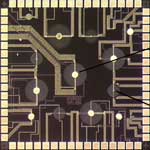 Gas sensors often operate by detecting the subtle changes that deposited gas molecules make in the way electricity moves through a surface layer. One advantage that carbon nanotubes offer for gas sensors, compared to metal oxide materials, is their fast response time and the fact that they react with gases at lower temperatures, sometimes even as low as room temperature. In order for CNT-based sensors to be able to compete with state-of-the-art CMOS technology, researchers need to develop a low cost, reliable and large-scale reproducible CNT deposition process on the wafer level. Researchers in the UK have now presented a novel concept of wafer level localized growth of 'spaghetti'-like CNTs on a fully processed CMOS substrate. This is the first successful proof of concept for growing CNTs at the post CMOS wafer stage.
Gas sensors often operate by detecting the subtle changes that deposited gas molecules make in the way electricity moves through a surface layer. One advantage that carbon nanotubes offer for gas sensors, compared to metal oxide materials, is their fast response time and the fact that they react with gases at lower temperatures, sometimes even as low as room temperature. In order for CNT-based sensors to be able to compete with state-of-the-art CMOS technology, researchers need to develop a low cost, reliable and large-scale reproducible CNT deposition process on the wafer level. Researchers in the UK have now presented a novel concept of wafer level localized growth of 'spaghetti'-like CNTs on a fully processed CMOS substrate. This is the first successful proof of concept for growing CNTs at the post CMOS wafer stage.
Nov 15th, 2010
 The automotive sector is a major consumer of material technologies - and nanotechnologies promise to improve the performance of existing technologies significantly. Applications range from already existing - paint quality, fuel cells, batteries, wear-resistant tires, lighter but stronger materials, ultra-thin anti-glare layers for windows and mirrors - to the futuristic - energy-harvesting bodywork, fully self-repairing paint, switchable colors, shape-shifting skin. The basic trends that nanotechnology enables for the automobile are: lighter but stronger materials; improved engine efficiency and fuel consumption for gasoline-powered cars; reduced environmental impact from hydrogen and fuel cell-powered cars; improved and miniaturized electronic systems; and better economies. This article provides an overview of a large number of efforts and applications involving nanotechnologies in the automotive industry.
The automotive sector is a major consumer of material technologies - and nanotechnologies promise to improve the performance of existing technologies significantly. Applications range from already existing - paint quality, fuel cells, batteries, wear-resistant tires, lighter but stronger materials, ultra-thin anti-glare layers for windows and mirrors - to the futuristic - energy-harvesting bodywork, fully self-repairing paint, switchable colors, shape-shifting skin. The basic trends that nanotechnology enables for the automobile are: lighter but stronger materials; improved engine efficiency and fuel consumption for gasoline-powered cars; reduced environmental impact from hydrogen and fuel cell-powered cars; improved and miniaturized electronic systems; and better economies. This article provides an overview of a large number of efforts and applications involving nanotechnologies in the automotive industry.
Nov 12th, 2010
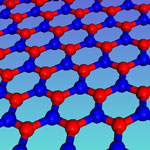 Along with graphene, boron nanoribbons have attracted more and more fundamental research interest. However, a major challenge in providing experimental evidence is that the preparation of atomically thin boron nanoribbons is very difficult. In new work that represents an important step in bridging theoretical predictions and experimental realization of atomically thin boron nanoribbons, reseaerchers demonstrate the successful fabrication of 'white graphene' nanoribbons - made of thermally and chemically stable atomic layers of hexagonal boron nitride - by unwrapping multiwalled boron nanotubes under delicate argon plasma etching. They show that the insulator-semiconductor electrical transition takes place during this processing and that this typically electrically insulating compound becomes a semiconductor when it is in ribbon morphology.
Along with graphene, boron nanoribbons have attracted more and more fundamental research interest. However, a major challenge in providing experimental evidence is that the preparation of atomically thin boron nanoribbons is very difficult. In new work that represents an important step in bridging theoretical predictions and experimental realization of atomically thin boron nanoribbons, reseaerchers demonstrate the successful fabrication of 'white graphene' nanoribbons - made of thermally and chemically stable atomic layers of hexagonal boron nitride - by unwrapping multiwalled boron nanotubes under delicate argon plasma etching. They show that the insulator-semiconductor electrical transition takes place during this processing and that this typically electrically insulating compound becomes a semiconductor when it is in ribbon morphology.
Nov 9th, 2010
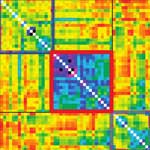 In a new research field that could be called 'experimental nanotoxicology', scientists have now, for the first time, demonstrated that biological effects of manufactured nanoparticles can be predicted using their chemical, physical, and geometrical properties. The results successfully demonstrate the high potential of cheminformatics approaches for improving the experimental design and prioritizing the biological testing of novel manufactured nanoparticles. The team modeled their approach after a process used in drug design and chemical synthesis, where the chemical structure of a new compound is quantitatively correlated with a well defined process, such as biological activity or chemical reactivity. Such a Quantitative Structure Activity Relationship (QSAR) can then be utilized to help guide chemical synthesis and drug design. They termed their approach quantitative nanostructure-activity relationship (QNAR) modeling.
In a new research field that could be called 'experimental nanotoxicology', scientists have now, for the first time, demonstrated that biological effects of manufactured nanoparticles can be predicted using their chemical, physical, and geometrical properties. The results successfully demonstrate the high potential of cheminformatics approaches for improving the experimental design and prioritizing the biological testing of novel manufactured nanoparticles. The team modeled their approach after a process used in drug design and chemical synthesis, where the chemical structure of a new compound is quantitatively correlated with a well defined process, such as biological activity or chemical reactivity. Such a Quantitative Structure Activity Relationship (QSAR) can then be utilized to help guide chemical synthesis and drug design. They termed their approach quantitative nanostructure-activity relationship (QNAR) modeling.
Nov 8th, 2010
 Scientists have shown that two pH response moieties - a pH solubility switch and a pH labile group - can be incorporated into the backbone of polymers which can then be formulated into dual responsive nanoparticles encapsulating small hydrophobic molecules and larger protein payloads. As nanoparticles they function akin to an AND logic gate. The beta-aminoester backbone moiety provides a pH triggered solubility switch, only when this switch is 'ON' does the ketal moiety also turn 'ON' to undergo rapid acid catalyzed hydrolysis. This system seems to be a promising vehicle for the administration of hydrophilic and hydrophobic payloads into target areas of the human body.
Scientists have shown that two pH response moieties - a pH solubility switch and a pH labile group - can be incorporated into the backbone of polymers which can then be formulated into dual responsive nanoparticles encapsulating small hydrophobic molecules and larger protein payloads. As nanoparticles they function akin to an AND logic gate. The beta-aminoester backbone moiety provides a pH triggered solubility switch, only when this switch is 'ON' does the ketal moiety also turn 'ON' to undergo rapid acid catalyzed hydrolysis. This system seems to be a promising vehicle for the administration of hydrophilic and hydrophobic payloads into target areas of the human body.
 Subscribe to our Nanotechnology Spotlight feed
Subscribe to our Nanotechnology Spotlight feed





